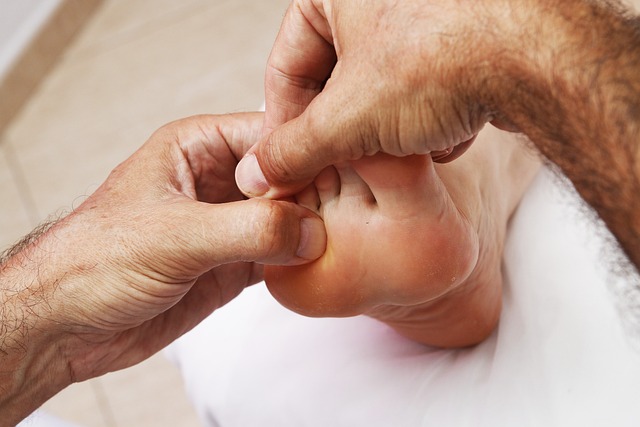Cold water immersion therapy, including practices like cold plunges and ice baths, has gained popularity as a powerful wellness tool. By briefly exposing the body to water below 59°F (15°C), this natural method offers numerous benefits such as reduced inflammation, improved circulation, enhanced muscle recovery, stress management, mood improvement, and potential immune system boosts. As an accessible alternative to cryotherapy, cold water immersion aids in accelerated post-workout recovery for athletes, promotes mental clarity, and increases overall resilience.
Understanding Cold Water Immersion Therapy: Unlocking the Science Behind It
Cold water immersion therapy, also known as cold plunge therapy or ice bath therapy, has gained popularity as a powerful recovery and wellness tool. This therapeutic practice involves briefly exposing one’s body to cold water, typically below 59°F (15°C), for a short period. The science behind it lies in the physiological response of the body to extreme cold. When immersed in cold water, blood vessels constrict, reducing blood flow to the extremities and core. This triggers a series of adaptive responses, including the release of endorphins, our natural painkillers, and the activation of the parasympathetic nervous system, promoting relaxation.
For athletes, cold water immersion offers several potential benefits. It can accelerate post-workout recovery by reducing muscle soreness and inflammation. The cold exposure also improves circulation when the body rewarms, enhancing oxygen and nutrient delivery to muscles. As a cryotherapy alternative, cold water therapy is accessible and provides similar health advantages. Moreover, it may help in managing stress, improving mood, and even boosting the immune system by increasing the production of white blood cells.
The Benefits of Cold Water Therapy for Overall Health and Well-being
Cold water immersion therapy has gained popularity as a powerful tool for overall health and well-being. The benefits of this practice are numerous, ranging from reduced inflammation to improved circulation. When you subject your body to cold water, whether through a cold plunge, ice bath, or other cold water recovery techniques, it triggers a series of physiological responses. These include the release of endorphins, which can reduce stress and pain, and the constriction of blood vessels followed by vasodilation, enhancing oxygen and nutrient delivery to tissues.
For athletes, cold water immersion for athletes is particularly beneficial. It aids in muscle recovery post-exercise, reduces soreness, and can even enhance athletic performance over time. As an alternative to cryotherapy, which involves brief exposure to extreme cold, cold water therapy offers a more accessible and potentially more enjoyable approach to achieving similar health benefits. The simple act of immersing yourself in cold water can be a game-changer for promoting mental clarity, boosting the immune system, and fostering overall resilience.
Exploring Cold Plunge Therapy: Techniques and Their Impact on Recovery
Cold plunge therapy involves brief exposure to cold water, typically through immersing oneself in an ice bath or cold water body. This technique has gained popularity as a recovery method among athletes and fitness enthusiasts. The practice includes various cold water immersion durations, from quick 10-second plunges to longer soaks of around 30 minutes.
Research suggests that cold water therapy offers numerous health benefits, including reduced inflammation, improved circulation, and enhanced muscle recovery. For athletes, cold exposure post-workout can help alleviate delayed onset muscle soreness (DOMS), speed up the healing process, and improve overall performance. As an alternative to cryotherapy, which involves controlled freezing, cold plunge therapy is accessible and provides a gentler approach to reaping similar health advantages.
Cold Water Exposure and Its Role in Enhancing Athletic Performance
Cold water immersion therapy has gained significant popularity among athletes as a powerful tool to enhance performance and aid in recovery. This practice, often referred to as cold plunge therapy or ice bath therapy, involves submerging oneself in cold water, usually below 59°F (15°C), for a short period. The benefits of cold water exposure are numerous; it helps reduce inflammation, which is crucial for athletes recovering from intense training sessions or competitions. By constricting blood vessels and then warming the body afterward, cold water therapy promotes better circulation, reducing muscle soreness and speeding up recovery time.
For athletes, incorporating cold water immersion for recovery can be a game-changer. It allows them to extend their training sessions without increasing fatigue, as the cold water provides a refreshing and rejuvenating effect. This therapy is a popular alternative to traditional cryotherapy, offering a more accessible and affordable approach to boosting athletic performance. Cold exposure therapy is now widely recognized as an effective strategy for post-workout recovery, helping athletes maintain peak physical condition.
Cold water immersion therapy, encompassing various practices like cold plunge therapy and ice bath therapy, has gained traction as a powerful tool for enhancing overall health and athletic performance. By delving into the science behind cold water exposure, we’ve explored its numerous benefits, from accelerating recovery through advanced cold water recovery techniques to boosting athletic endurance. As alternatives to cryotherapy, these natural methods offer accessible ways to harness the healing power of cold, leaving a lasting impact on well-being.
